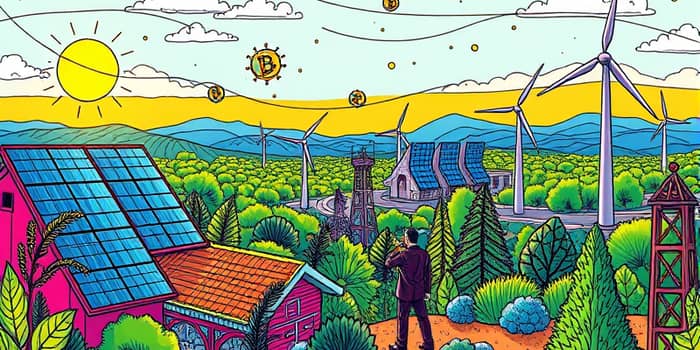
As the world faces mounting environmental challenges and social inequalities, the financial sector is evolving rapidly to channel capital toward sustainable solutions. Purposeful environmental and social impact is no longer a niche ambition—it’s becoming a core objective for investors, corporations, and governments alike. With innovative technologies at the forefront, sustainable finance is poised to reshape how we invest for a greener tomorrow.
Sustainable finance integrates environmental, social, and governance (ESG) factors into investment decisions, loans, and banking systems. It seeks to fund projects that deliver tangible benefits to the planet and communities while generating financial returns. From renewable energy installations to ethical corporate initiatives, sustainable finance encompasses a broad spectrum of activities dedicated to long-term resilience.
According to industry forecasts, global ESG assets will soar to $34 trillion by 2026, underscoring the rapid sector expansion and mainstream adoption of sustainable finance strategies. As traditional investments face increasing scrutiny over their environmental footprints, ESG integration offers a compelling path forward.
The momentum behind green capital is undeniable. In 2024, the global issuance of green, social, and sustainability-linked bonds reached record highs, setting the stage for more than $1 trillion of new issuances by 2025. Sovereign, supranational, and agency (SSA) bond issuance alone hit $530 billion in 2024, with commitments to scale climate financing to $120 billion by 2030 and $300 billion by 2035.
This influx of capital reflects investors’ growing recognition that sustainable assets are often lower risk and more resilient in the face of economic and environmental shocks. From pioneering development banks to global asset managers, stakeholders are aligning profitability with responsibility.
Fintech innovations are the engine behind this transformation, making it easier than ever to access, measure, and manage sustainable investments at scale.
Underpinning these tools is the ethical development of AI, ensuring fairness, accuracy, and minimization of greenwashing. With stringent data standards and transparent methodologies, fintech can deliver ethical AI tools for managing ESG data that drive genuine impact.
As green finance matures, a variety of instruments cater to different risk profiles and impact objectives.
These instruments not only foster environmental progress but also unlock fresh sources of capital, drawing in investors who seek both returns and positive impact.
Robust regulations are crucial to maintain integrity in sustainable finance. The EU’s Sustainable Finance Disclosure Regulation (SFDR) now mandates detailed ESG disclosures at both firm and product levels, categorizing funds under Articles 6, 8, and 9. In Canada, Bill C-59 and UNCTAD guidelines enforce exclusion of controversial activities and stringent human rights standards.
Another key innovation is the Green Asset Ratio, requiring banks to report the share of climate-aligned assets on their balance sheets. These measures combat greenwashing and ensure that sustainability claims are backed by standardized impact reporting and independent verification.
Several industries stand to gain from the flow of green finance:
By aligning investments with these high-impact areas, stakeholders can accelerate the transition to a low-carbon economy while capturing long-term growth opportunities.
Despite the promise, sustainable finance faces hurdles. Greenwashing remains a critical concern, requiring ever-tighter standards and third-party audits. Data transparency is key; investors demand robust, comparable ESG metrics to validate impact claims.
Looking ahead to 2025 and beyond, several trends will shape the landscape:
Global commitments, such as COP29 agreements by multilateral development banks, signal a sustained uptick in climate funding. As green finance weathers geopolitical and economic shifts, its resilience underscores a fundamental shift in how capital is allocated.
Whether you’re an institutional investor, a fintech entrepreneur, or an individual saver, there are concrete steps you can take today:
By embracing these practices, each of us can play a role in directing capital toward solutions that protect our planet and foster equitable growth. The intersection of technology and finance offers unprecedented tools—now it’s up to us to use them wisely and boldly.
References





